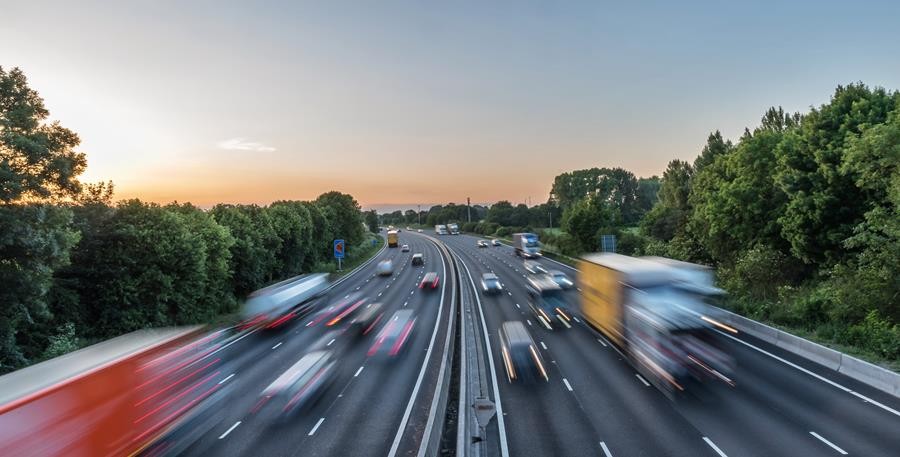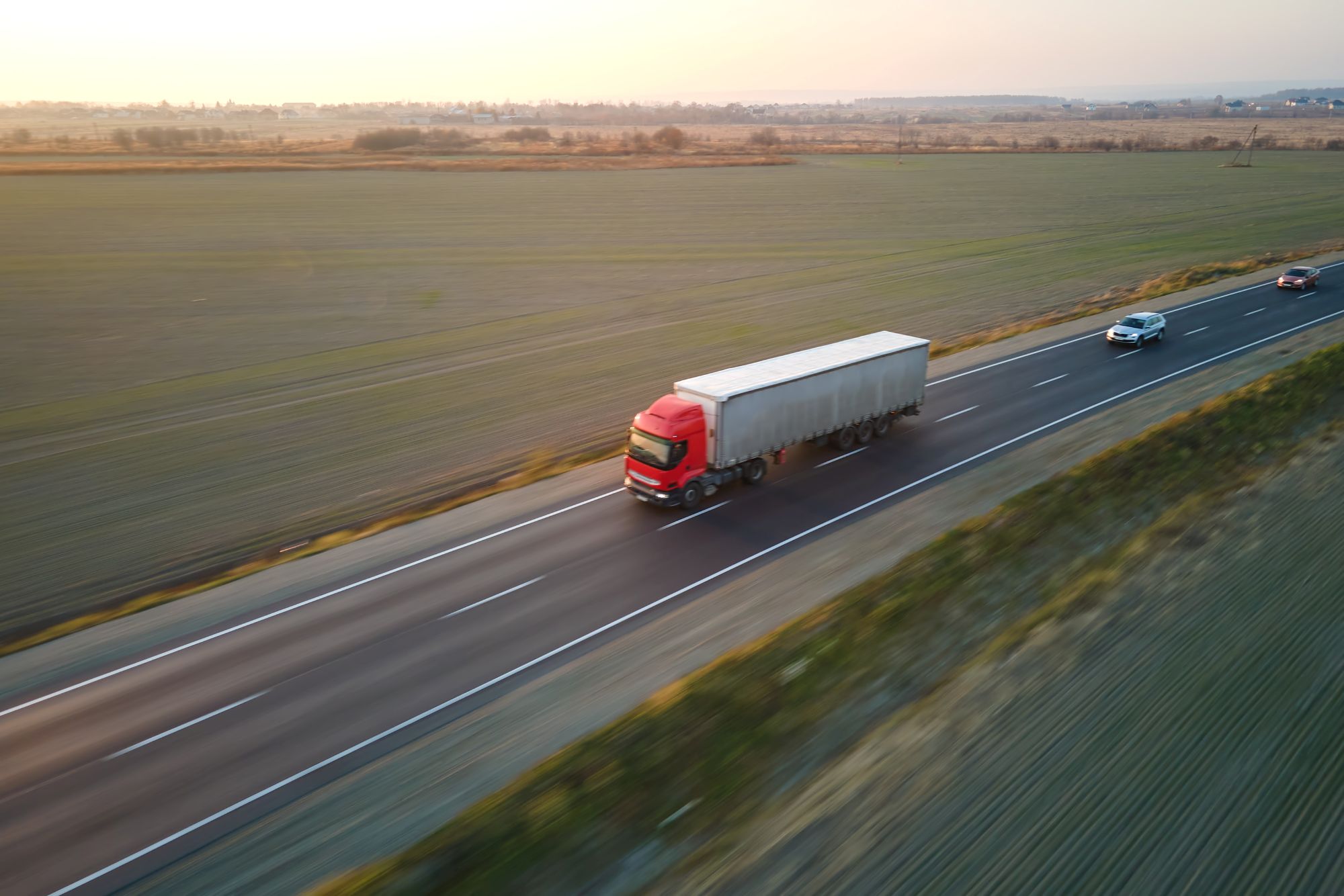
Susie Jones
Droga do zrównoważonego rozwoju: Europejskie wyzwanie w zakresie emisji w sektorze transportu
Utworzony: 08.08.2024
•
Aktualizacja: 08.08.2024
Raport Clean Technica z 2024 r. ujawnił, że ponad 25% emisji z ruchu drogowego pochodzi z sektora transportu w Europie - przy czym pojazdy ciężarowe odpowiadają za 85% emisji (autobusy i autokary stanowią pozostałą część).
Przy obecnym tempie, sam sektor transportu będzie odpowiadał za prawie połowę emisji gazów cieplarnianych w Europie w 2030 r. - emisje z transportu w Europie wzrosły o ponad jedną czwartą od 1990 roku. Emisje w całej gospodarce zmniejszyły się - jednak od szczytowego poziomu w 2007 r. sektor transportu dekarbonizuje się ponad trzy razy wolniejr niż reszta gospodarki.
Co jest przyczyną rosnącej emisji CO2 w branży transportowej?
Od czasu rozpowszechnienia się handlu elektronicznego i usług dostaw do domu, zapotrzebowanie na większą liczbę ciężarówek na drogach znacznie wzrosło. W konsekwencji zwiększony popyt spowodował wzrost emisji CO2 w branży transportowej.
Raport Clean Technica dotyczący krajowego tonażu towarów w różnych rodzajach transportu (drogowym, kolejowym i wodnym) ujawnił, że transport drogowy był bardziej dominujący w Europie niż kolejowy i wodny w porównaniu z innymi regionami geograficznymi (USA i Indie). Chociaż Chiny są bardziej zależne od transportu drogowego, raport ujawnił, że kraj ten obsługuje około 600 000 elektrycznych ciężarówek do dostarczania towarów.

Jakie są plany redukcji emisji CO2 w Europie?
Parlament Europejski przyjął [Europejskie prawo o klimacie] (https://climate.ec.europa.eu/eu-action/european-climate-law_en#:~:text=The%20European%20Climate%20Law%20writes,2030%2C%20compared%20to%201990%20levels.), aby stawić czoła rosnącym emisjom CO2. W ramach tego prawa cel UE dotyczący redukcji emisji gazów cieplarnianych netto do 2030 r. został zwiększony do co najmniej 55%, co czyni neutralność klimatyczną do 2050 r. prawnie wiążącą.
W maju 2024 r. kraje UE zatwierdziły prawo mające na celu zmniejszenie emisji CO2 z samochodów ciężarowych. Nowe prawo będzie wymagać, aby nowe pojazdy ciężarowe sprzedawane w UE od 2040 r. były bezemisyjne - przy jednoczesnym egzekwowaniu 90% redukcji emisji CO2 z nowych pojazdów ciężarowych do tego samego roku. Producenci muszą sprzedawać dużą liczbę pojazdów ciężarowych w pełni wolnych od emisji CO2 - na przykład pojazdów elektrycznych i napędzanych wodorem - aby zrównoważyć pozostałą sprzedaż pojazdów emitujących CO2.
Jakie działania mogą podjąć menedżerowie flot, aby zmniejszyć emisję CO2?
Menedżerowie flot mogą podjąć działania w celu zmniejszenia emisji CO2:
Ostre hamowanie, gwałtowne przyspieszanie i praca na biegu jałowym mogą zwiększać zużycie paliwa i emisję gazów cieplarnianych - Chociaż monitorowanie zachowania kierowcy może być wyzwaniem, technologia AI może zapewniać ciągłe informacje zwrotne kierowcom i menedżerom floty. Dowiedz się więcej o tym, jak AI może pozytywnie wpłynąć na zrównoważony rozwój w branży transportowej.
Floty ze starszymi pojazdami mogą przejść na hydrorafinowany olej roślinny (HVO), wodór lub pojazdy ciężarowe z napędem elektrycznym, aby znacznie zmniejszyć emisje. Menedżerowie flot muszą jednak wziąć pod uwagę odległość, jaką mogą pokonać pojazdy napędzane paliwami alternatywnymi oraz konsekwencje kosztowe.
SNAP Account umożliwia menedżerom flot zmniejszenie przebiegu objazdów - dzięki ponad 600 partnerom usługowym dostępnym dla klientów SNAP Account, menedżerowie flot mogą planować nocne postoje dla swoich kierowców na trasie.
Czy istnieje infrastruktura do ładowania elektrycznych pojazdów ciężarowych?
Według badania PwC, do 2030 r. jedna trzecia wszystkich samochodów ciężarowych w Europie będzie miała napęd elektryczny. Ponieważ firmy flotowe podejmują kroki w kierunku elektryfikacji, postoje ciężarówek w całej Europie muszą być w stanie zaspokoić zapotrzebowanie na stacje ładowania elektrycznego.
Zapewnienie infrastruktury będzie kosztowne dla wielu postojów ciężarówek i stacji paliw. Jednak ci, którzy już teraz posiadają ładowarki do samochodów elektrycznych, są w dobrej pozycji, aby skorzystać z przyszłych fal elektrycznych ciężarówek. Do 2030 r. liczba publicznych stacji ładowania w Europie wzrośnie do ponad [3600] (https://www.2win.eu/blog/electric-trucks/) - UE przedstawiła ambitne przepisy dotyczące ładowania w ramach rozporządzenia w sprawie infrastruktury paliw alternatywnych (AFIR). AFIR planuje wyposażyć główną sieć drogową w punkty ładowania co 60 km - zapewniając wystarczającą ilość energii do ładowania i pojemność wodoru, aby 9% flot samochodów ciężarowych i autokarów było bezemisyjnych do 2030 roku.
Który kraj europejski emituje najwięcej CO2?
W 2021 r. Niemcy, Francja i Włochy były odpowiedzialne za najwyższą ogólną emisję gazów cieplarnianych (GHG) - od [375 000 do 740 000 kton CO2] (https://ccpi.org/which-european-countries-are-the-worst-climate-polluters-and-why/). Jednak kraje o większej liczbie ludności wytwarzają więcej emisji gazów cieplarnianych - dlatego przeglądanie ogólnych emisji gazów cieplarnianych daje zniekształcony obraz.
Bezstronne spojrzenie na emisje daje inną perspektywę - Luksemburg, Irlandia i Czechy wyprodukowały najwyższe emisje na mieszkańca w UE w 2021 roku.
Jaki jest najbardziej przyjazny dla środowiska sposób transportu towarów?
Transport towarów koleją jest jednym z najczystszych środków transportu, ale zapewnia również inne korzyści:
Zmniejsza zatłoczenie dróg, co przyczynia się do poprawy jakości powietrza.
Kolej oferuje szybszy sposób transportu towarów i usuwa przeszkody związane z dużym natężeniem ruchu.
Samochody ciężarowe napędzane paliwami alternatywnymi to kolejny przyjazny dla środowiska sposób transportu towarów. Hydrorafinowany olej roślinny (HVO) może natychmiast zredukować do 90% emisji gazów cieplarnianych w porównaniu do standardowego oleju napędowego w całym cyklu życia produktu. Certas Energy HVO stoi za przejściem na czystszą alternatywę - pomagając firmom osiągnąć ich cele w zakresie zrównoważonego rozwoju i podjąć znaczące kroki w kierunku przyszłości zerowej netto.



